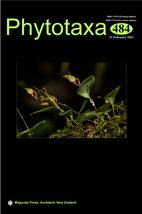Abstract
Verbenaceae is represented in Brazil by 15 genera and ca. 290 species, with most of its richness in the Cerrado and Atlantic Forest domains. The state of Espírito Santo has an area of 46,184.1 km2, wholly embedded in the Atlantic Forest. Nonetheless, due to the intense environmental degradation in the state, only 10.5% of its original vegetation remains. The present study is part of the “Flora do estado do Espírito Santo” project and aims to provide a taxonomic treatment to Verbenaceae in the state, as well as to analyze its distribution patterns, together with preliminary conservation assessments for each species. It is based on morphological analysis of herbaria collections, field expeditions, and literature compilation. Distribution maps were made for each species, while the preliminary conservation assessments followed the criteria proposed by the IUCN. Verbenaceae is represented in the state of Espírito Santo by 31 species arranged in 11 genera: Aloysia (2 spp.), Bouchea (1 sp.). Casselia (1 sp.), Citharexylum (1 sp.), Glandularia (1 sp.), Lantana (10 spp.), Lippia (4 spp.), Petrea (1 sp.), Priva (2 spp.), Stachytarpheta (6 spp.) and Verbena (2 spp.). Eight species occurring in Espírito Santo are threatened with extinction. Three new records are verified, including species of the genus Lantana. The dense rainforest, which covers most of the state’s territory, presents the most significant number of species (20 spp.), followed by pioneer vegetations (12 spp.), seasonal semideciduous forests (11 spp.), inselbergs (8 spp.), and ecological refuges (2 spp.). The main richness centers for Verbenaceae in the state of Espírito Santo are the municipalities of Linhares, Santa Teresa, Vitória, Vila Velha, and Guarapari in this order. In contrast, the family is noticeably little represented in the northern region of the state, as well as near its borders, where the forest remnants are highly fragmented and scattered. The current results contribute to the taxonomic and biogeographic knowledge of Verbenaceae, to the creation of conservation strategies for threatened species in the State of sspírito Santo, and reinforce the need of fieldwork in several areas of the state.

